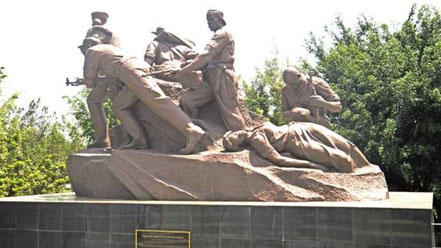what can i see at the campaign against genocide in rwanda in 2024

The Campaign Against Genocide Museum is dedicated to RPA soldiers who fought in the liberation struggle. The Campaign Against Genocide Monument is located near the Rwandan parliament. The museum has been expanded to include audiovisual displays inside and outside scenes of warfare. click here to view mountain gorilla trekking safaris
A deeper understanding of the political processes leading up to the 1994 genocide can be gained from the Campaign Against Genocide Museum. The museum is a modern wonder, partially furnished with traditional artifacts from Rwanda. Since Parliament served as the Rwanda Patriotic Army's base, it was selected to organize this event. view our sample gorilla trekking tours here
Due to the pandemic, Rwanda has observed the Genocide against the Tutsi in silence for the previous two years; nevertheless, the 28th Kwibuka has reinstated in-person public ceremonies. This year, tourists are being welcomed to locations containing genocide memorials. The location is the relatively new Campaign Against Massacre Museum (CAG), which provides a more engaging experience than just books and academic literature about the massacre.
The Campaign Against Genocide Museum is just a 15-minute drive from Kigali International Airport. The CAG is located in Gishushu, Kigali, on the premises of the National Parliament of Rwanda. Being the epicenter of the liberation struggle, the museum provides deeper learning about the political events that led to the 1994 genocide, its aftermath, and the war for liberation.
What can i see at campaign against genocide museum in Rwanda in 2024
The Imigingo and traditional wall cladding are among the traditional Rwandan artifacts that largely furnish the ultramodern museum. Visitors can view, read, and listen to the digital images, embedded audio and visual movies, and pictures that line the well-lit interior.
The reason Parliament was selected to organize this event was because the Rwanda Patriotic Army used it as a base when they were in negotiations for mediation with President Juvenile Habyarimana's administration. Thus, it serves as a shrine for the narrative of the liberation struggle.
The pictures and drawings depict the 600 RPA soldiers, under the command of Rt. Col. Charles Kayonga, going on a tactical military mission while securing RPF delegates en route to sign the Arusha peace accord.
The exhibit at CAG also serves as a historical backdrop for the events leading up to 1994 by highlighting the incitement of violence by media outlets like Radio Television Libre des Milles Collines (RTLM) and the Kangura newspaper.
The images at CAG of Dr. Leon Mugesera, Rt. Col. Theoneste Bagosora, and Felicien Kabuga—who are regarded as the masterminds and perpetrators of the genocide—are also on exhibit. Images of more than 450,000 well-trained militia members who initiated the killings are placed next to them.
The effective counter rescue plans carried out by the RPA through Kanombe, Mont Kigali, Mont Jali, Gitarama, and Butare before moving on to Ruhengeri and Gisenyi on July 17, 1994, are the main subject of this section of the exhibition. It provides information on the many battalions that were set up to tactically defend and rescue people.
The memorials outside the museum depicting soldiers engaged in war are the greatest tribute to the valor of the RPA.
24 subterranean L-shaped bunkers, which symbolize the hide-out tunnels the RPA excavated while they tented at these same parliament grounds in 1994, were added to the exhibition last year.
Three further bunkers made of stacked packed sacks stand in for the ones used by the RPA and UN Forces to protect peace negotiators at the time.
The Campaign Against Genocide Museum is only accepting fully vaccinated visitors. Open every day from 8 a.m. to 5 p.m.
When is the best time to visit the campaign against genocide museum in Rwanda in 2024
The campaign against genocide museum in Rwanda can be visited throughout the year, although the best time visit Rwanda ranges between June to September or from December to February
